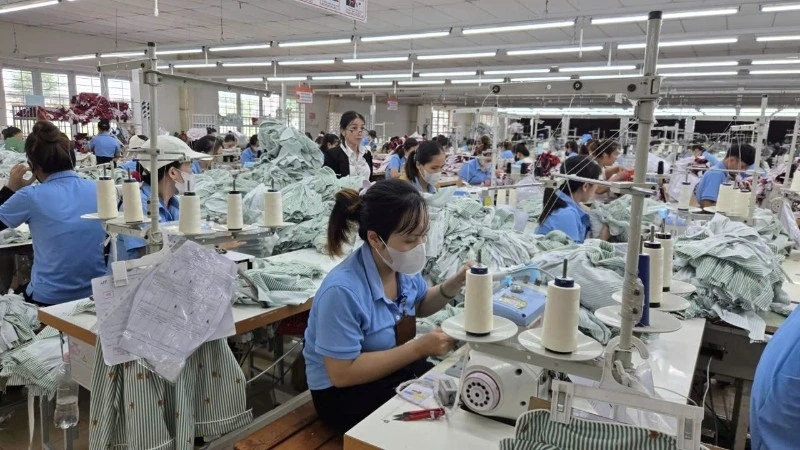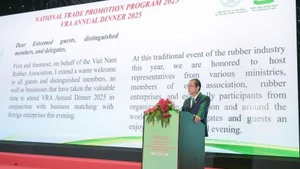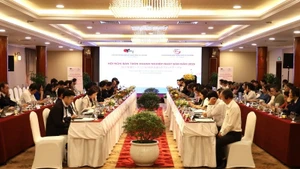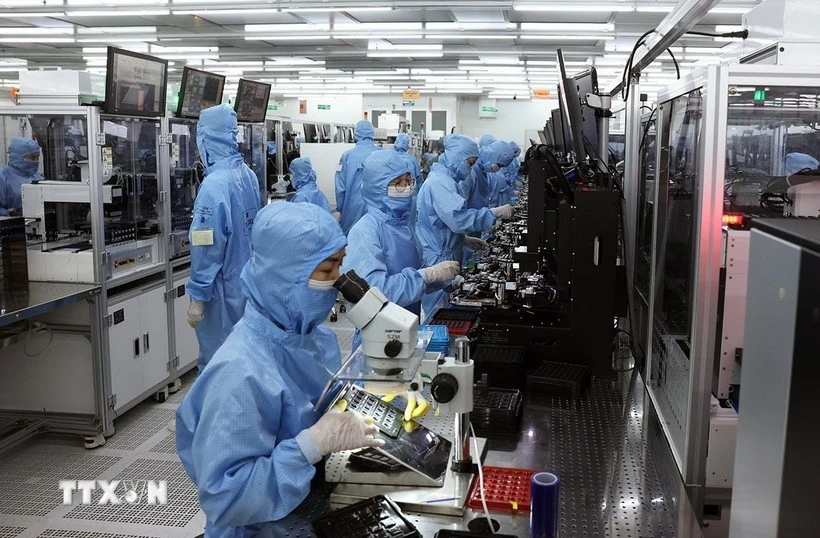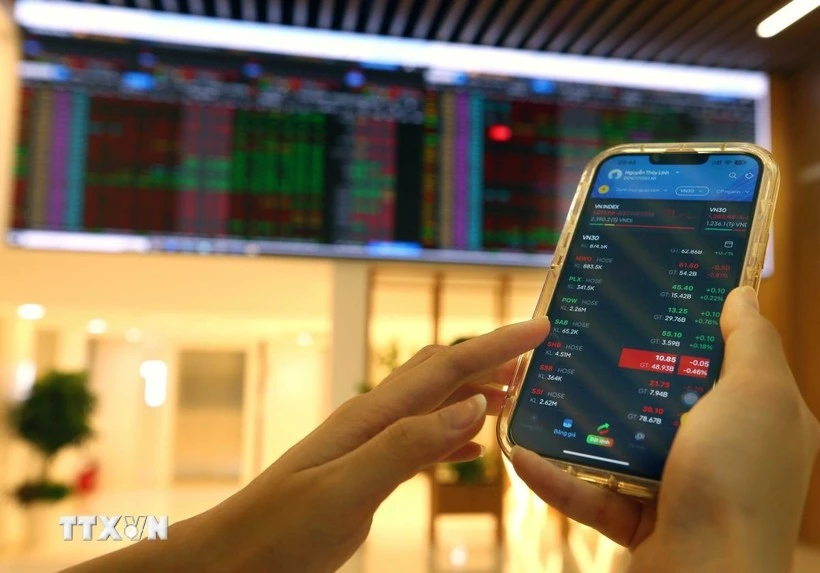The proposal to establish a national physical gold exchange continues to attract public and expert attention, especially as the Government and the State Bank of Viet Nam (SBV) are reviewing and improving the regulatory framework for gold market management under the direction of Party General Secretary To Lam.
Earlier, in a report submitted to the National Assembly on measures to manage and control the gold market, SBV Governor Nguyen Thi Hong stated that, as of early 2025, the price gap between domestic SJC gold bars and global prices had narrowed significantly — from around 25% down to 5–7%.
However, since mid-April, the gap has widened again, surpassing 10 million VND per tael (approximately 12%), due to multiple factors, particularly global economic uncertainty and geopolitical tensions.
The inevitable need for market transparency
Amid growing market pressure, the Government issued Decree No. 232/2025/NĐ-CP, abolishing the State monopoly on gold bar production and allowing for a broader range of entities to produce gold bars and import raw gold. This aims to increase gold supply in the market while narrowing the gap between domestic and global gold prices.
For over a decade, Viet Nam’s gold market has been tightly regulated under Government Decree No. 24/2012/NĐ-CP on gold trading activities, which helped curb the “goldisation” of the economy and maintain monetary stability.
However, the persistent domestic–global price gap — sometimes reaching 15–20 million VND per tael — has raised questions about transparency and the effectiveness of existing mechanisms.
Experts point out that this gap reflects not only supply–demand factors but also the absence of a transparent, centralised trading platform where prices are formed openly based on market principles.
Hence, the proposal to establish a national physical gold exchange — a regulated, supervised, and standardised trading venue — is considered a necessary and internationally aligned step. According to the World Gold Council (WGC), Viet Nam imports around 50 tonnes of gold annually to meet domestic demand, equivalent to roughly 2.5–3 billion USD, while total gold consumption between 1990 and 2023 exceeded 2,000 tonnes.
General Director of Techcombank Securities (TCBS) Nguyen Thi Thu Hien commented: “Most of the gold held by the public remains outside official market control, creating a ‘grey area’ in management. Therefore, a national gold exchange is not merely a regulatory tool but a strategic policy decision — one that mobilises social resources and integrates gold as a component of the financial and monetary system, rather than a passive store of wealth.”
In fact, in 2007, the Asia Commercial Bank (ACB) established the ACB Gold Trading Centre, achieving an annual trading volume of nearly 5,625 tonnes and a peak monthly turnover of 712 tonnes. At the time, gold prices were based on world prices converted via the USD/VND exchange rate, with the bank acting as a payment intermediary and providing both margin trading and physical gold delivery services.
ACB Deputy General Director Nguyen Duc Thai Han noted: “The establishment of a national physical gold exchange today would bring many advantages, enhancing transparency in physical gold trading under Viet Nam’s standards, while creating a liquid trading environment through an electronic transaction system.”
International experience also shows that physical gold exchanges such as the Shanghai Gold Exchange (China), LBMA (the UK), and CME (the US) operate under transparent, public principles, involving major financial institutions and being closely supervised by state authorities.
In China, the Shanghai Gold Exchange is directly overseen by the central bank, helping control gold flows and serving as a tool for managing exchange rates and monetary policy.
In Singapore, the gold market is highly developed but operates under a clear legal framework governing reserves, custody, transportation, and taxation. Thus, a physical gold exchange is not merely a marketplace but also an instrument of financial and monetary policy, requiring a modern, transparent, and tightly controlled operating mechanism.
“Bottlenecks” that must be addressed
To turn this policy into reality, several issues must be clearly identified.
First is the legal framework. While Decree No. 24/2012/NĐ-CP — as amended by Decree No. 232/2025/NĐ-CP — governs gold trading activities, it does not yet provide specific provisions for a physical gold exchange model. Developing and operating such an exchange will require a new legal framework clarifying the responsible authority, management and licensing mechanisms, supervision, and risk-handling procedures.
Second is technical infrastructure and operational capacity. A national gold exchange would need robust systems for storage, custody, standardisation of gold bars, and secure, transparent, and reliable technological platforms.
Without proper standardisation, the exchange could become a “hotspot” for speculation or even price manipulation. Nguyen Duc Thai Han observed: “The biggest challenge lies in the diversity of gold types in the market, which lack uniform standards. The absence of centralised custody and storage systems, along with unclear payment mechanisms and legal foundations, are factors that need to be synchronised.”
Third is capital flow management and speculation control. As gold is a traditional safe-haven asset, instability may prompt capital to flow excessively into gold, affecting monetary policy. Therefore, mechanisms for account supervision, transaction limits, and participation rules for institutional and individual investors must be clearly defined.
At the October 20 opening session, socio-economic reports submitted to the National Assembly emphasised the need to safeguard financial system stability, curb inflation, and maintain monetary stability. The Government and the SBV have been tasked with developing a regulatory mechanism for the gold market, including the proposal for a physical gold exchange.
The guiding principle is not to liberalise gold trading but to enhance transparency and openness — thereby narrowing the domestic–global price gap, curbing speculation, protecting consumers, and supporting monetary policy management.
Several National Assembly deputies suggested that the establishment of the gold exchange should proceed gradually and cautiously, with a clear roadmap and close coordination among relevant ministries and sectors such as Finance, Industry and Trade, and Public Security to ensure system safety.
To make the gold exchange a functional reality, a coherent policy design is required — encompassing legal foundations, technical infrastructure, risk management, and communication. It is crucial to avoid haste or premature implementation, which could undermine market confidence.
SBV Deputy Governor Pham Tien Dung affirmed: Implementation must be cautious and incremental, as this policy will have significant macroeconomic implications. In the initial phase, the exchange will only trade internationally standardised gold, while domestic inspection procedures are being harmonised. The SBV will draft the necessary legal documents and seek feedback from relevant ministries before submitting them to the Prime Minister.
The ultimate goal of this model is not merely to manage the physical flow of gold effectively but to take a strategic step towards steering Viet Nam’s gold market into a transparent, standardised, and more deeply integrated trajectory with the international financial system.


